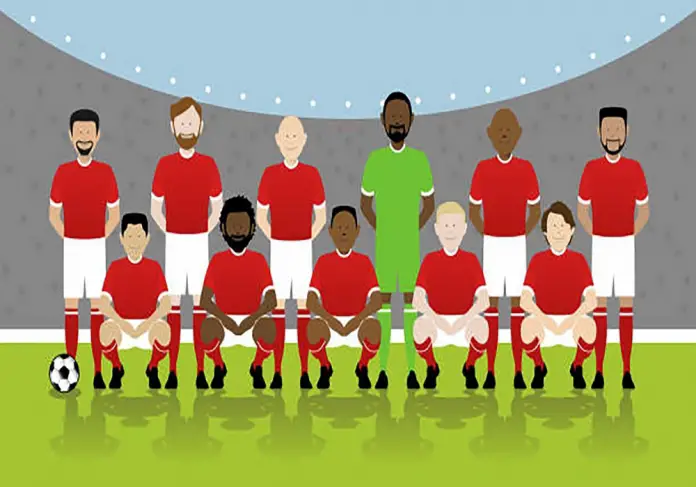Football is always changing, and the reasons for this are widely recognised. International competitions are becoming more popular, wages are rising, and transfer fees are going up at an alarming rate. Even VAR (video assistant referee) is evolving, with tweaks and adjustments made in reaction to public outcry. However, there are some aspects of the sport that cannot be changed.
The currency will always be goals, the pitch will always comprise halfway lines, center circles, and penalty spots, and each team will always line up with 11 players. But why is this? Why are there 11 players in a football team?
This is an intriguing issue that has no definite explanation and is the subject of competing and sometimes interwoven hypotheses.
What is known is that 11 players per team were made mandatory by a legislation amendment in 1897, but that it had already been conventional in the 1870s.
Modern football has several origins, some of which date back to antiquity. Around 200 CE, the Aztecs and the Chinese were playing tenuous versions of ball sports. Calcium Florentino, a violent sport that dates back to the Middle Ages, is the game’s original ancestor in Italy.
Although it is debatable if England is football’s home, the shape of the game that evolved in the nation was largely a compromise between the violent anarchy of rural and village sports, which date back to the 12th century.
The variations of the game which sprung up and were adapted in English public schools such as ‘Eaton’ and ‘Rugby’. A codified version of the sport was always going to involve compromise and for many years competing rules existed.
The Sheffield Rules, which were originally published in 1858, were the first published laws. They prohibited hacking, tripping, and pushing and established a modern-day throw-in, but neither they nor the competing FA regulations released in 1863 mentioned the number of players on each side.
They decided that when a goal was scored, the sides should switch ends, and that a player might win a free kick with a fair catch if they didn’t run with the ball. However, there was no mention of referees, pitch markings, or the number of players.
There wouldn’t be for another 30 years when the Sheffield Association approved the Football Association’s (FA) regulations in 1877, and the International Football Association Board (IFAB) as it is currently called. In 1897, following the formation of IFAB as a method of unifying regulations for international games between home nations, 11 players became IFAB law.
But what caused it to become unofficially standardised in the first place? Then there’s a choice between two reasonable answers. Cricket has been cited as a source of inspiration. The popularity of cricket in England precedes contemporary football, and one hypothesis suggests that 11 players in a cricket team became 11 players in a football squad.
It’s plausible, not just because of Cricket’s success, but also because many early English clubs were established around the cricket season, with players creating teams in the winter months to stay in shape. They most likely played with 11 players because that was the number of players they had on hand at the time. Following the introduction of a goalkeeper who could guard his goal with his hands in 1871, it may have been a question of trial and error.
Eleven players may have progressively become the accepted standard as the optimal number of players for the various responsibilities on the field or the available space. That was before another regulation modification in 1897, when the maximum pitch length was decreased from 200 to 130 yards. The team, however, survived the cut and has stayed the same ever since.







